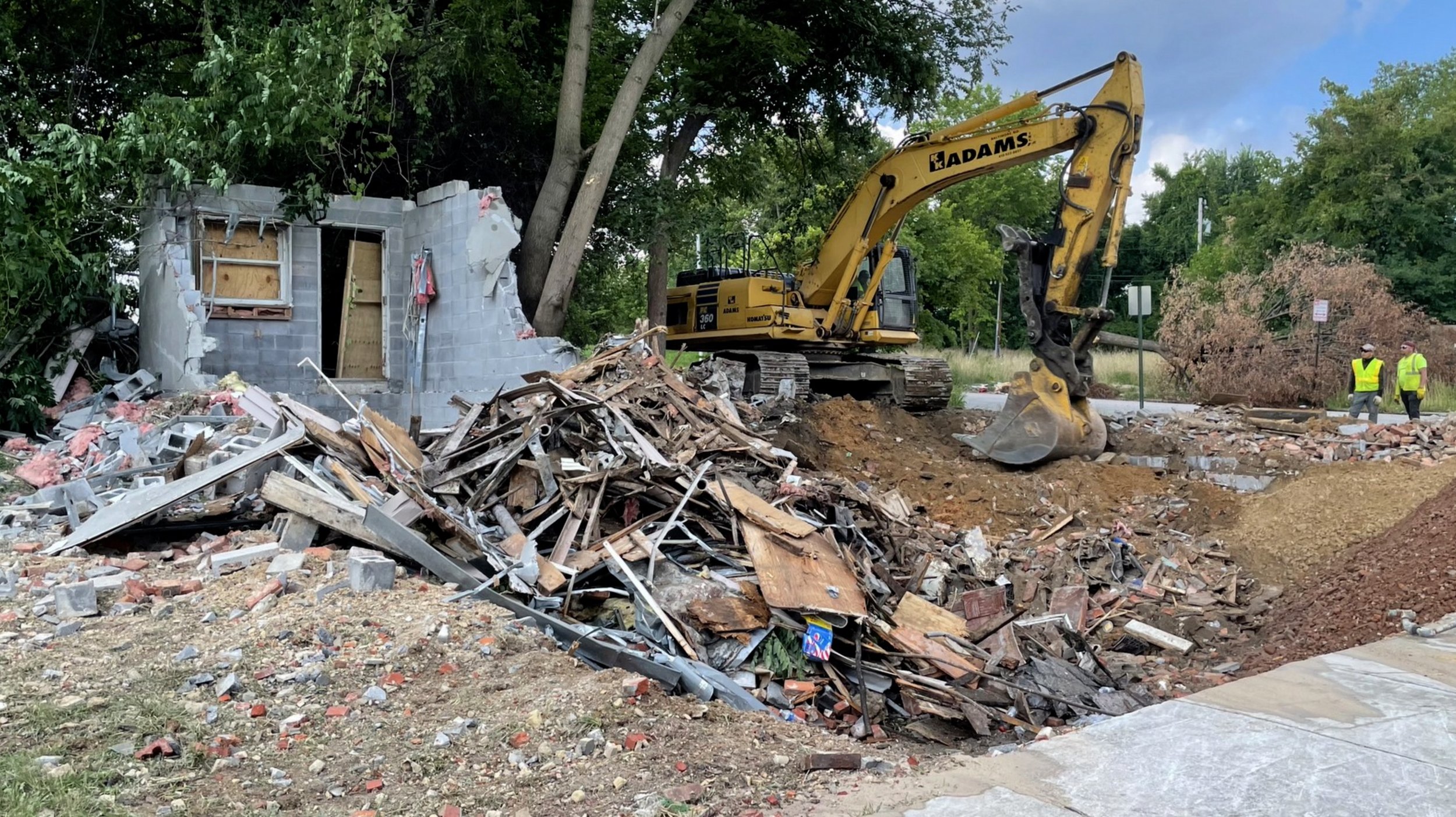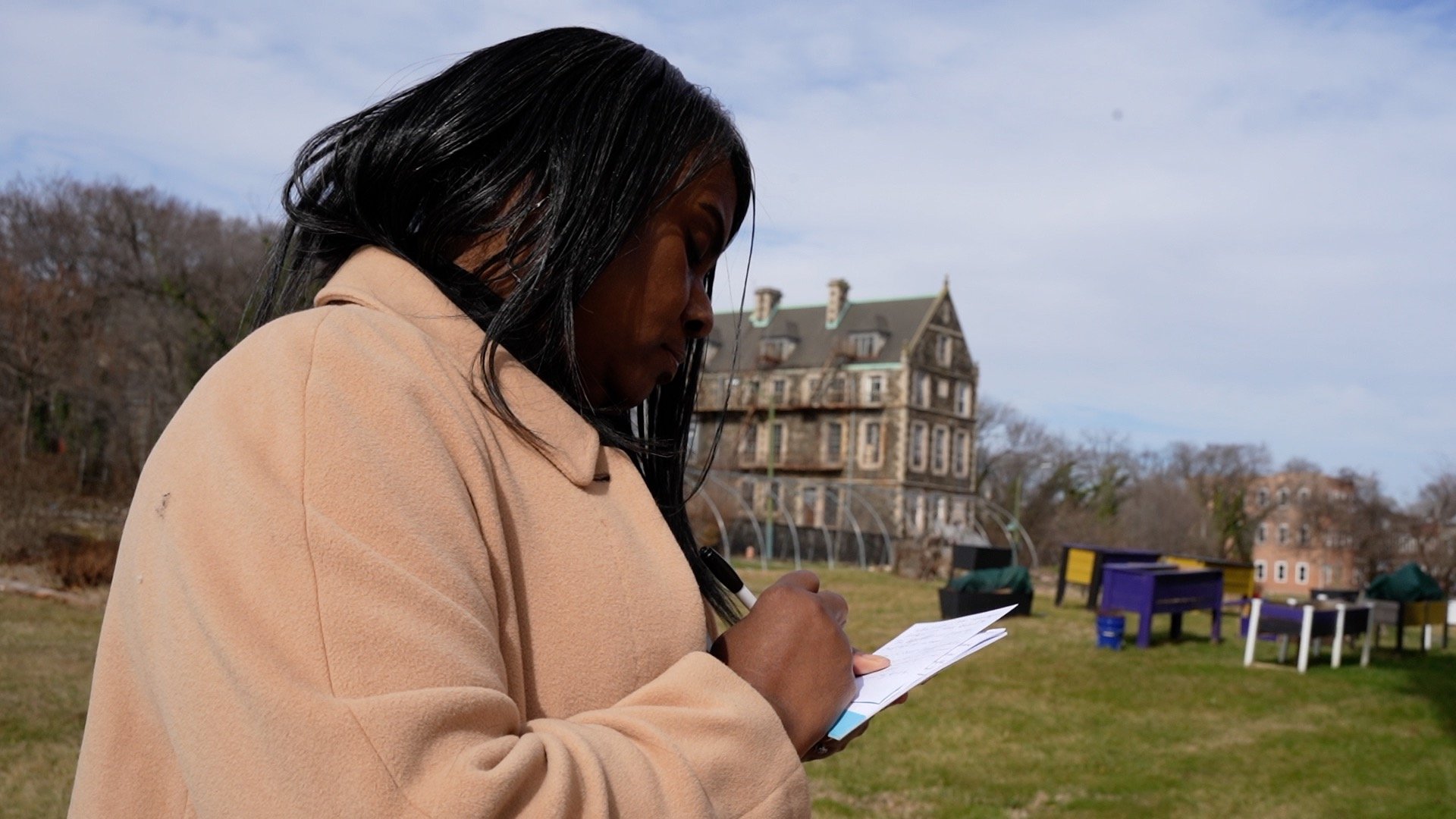The Making of the Documentary, The Sonia Eaddy Playbook, When Winning is Not Enough
Poppleton Residents fear for their homes now marked with X for demolition
Parcha speaks on what life is like living through eminent domain, resulting in her being removed from her childhood home.
Last week, when former Poppleton residents, displaced due to eminent domain, stood before Baltimore’s media to announce a formal complaint with the U.S. Department of Housing against the city, behind them the very homes they hoped to save stood freshly painted with Xs marking them for demolition.
Residents with Economic Action Maryland announce a complaint with HUD that Baltimore’s long use of eminent domain creates segregation.
After months of planning with Poppleton Now, the Non-Profit Economic Action Maryland along with former resident Angela Banks filed a complaint on February 13th with HUD, charging that Baltimore’s City’s use of eminent domain that cleared resident out to make way for large scale development created segregation. If upheld, Baltimore City would be in violation of the Fair Housing Act and could have funds held up until they addressed their eminent domain use, which has been a decades long tool to encourage development by clearing out African Americans from their neighborhoods. The most recent large scale example is The Johns Hopkins bio-tech campus that came about with the clearing of about 500 homes through eminent domain.
Parcha McFadden prepares her speech on what life has been like after eminent domain for her and her 10 year old daughter.
Angela Banks spoke on being homeless after eminent domain forced her from her home that still stands but is marked for demolition
But even before the stories about the residents’ case against Baltimore hit the air and were pressed into print, organizers scurried to craft a letter requesting the city to impose a moratorium on demolishing the homes, one of which was Angela Banks and the other was that of Parcha McFadden – both were speakers at the press conference.
Poppleton organizers had reason for alarm. In July 2021, days after Poppleton Now President Sonia Eaddy spoke out against the city use of eminent domain, charging the city with deliberately destroying her neighborhood, crews came in and demolished three homes that they had hoped to save. One of them was known as the Boss Kelly home and dated back to the early 19th Century.
Last summer Mayor Brandon Scott announcing that Sonia Eaddy property and the Sarah Ann homes have been spared demolition said development needs to occur to bring in new residents and revenue but with assurances that the development occurs without displacement.
“Baltimore’s renaissance is at hand but it can not be a renaissance that displaces residents who have been here through thick and thin”
Although all Eaddy could do was stand before the rubble and relay her shock to the media, that summer of 2021, the group went into over-drive and successfully argued for the sparing of The Sarah Ann Alley houses along with Eaddy’s home. After documenting the homes were African American occupied since 1870s and the alley homes themselves are now “an endangered species” in Baltimore, the city recognized them as historic. In July 2022, Mayor Brandon Scott came down to the very spot where Eaddy had stood, and embraced the idea that these homes needed to be preserved.
Sonia Eaddy, the President of Poppleton Now, asked the question: If eminent domain is design to a private take for a public purpose, just who is this public. “It don’t look like us.”
“This is their way of paying developers for revitalization, the taking of our homes, our businesses, our investment properties, our land, our churches, our playgrounds, our schools, our livelihoods, and give them over to developers to build expensive apartment complexes and retail properties that we can’t even afford to rent, shot or own ”
The Sarah Ann Street in 2021 fully occupied.
Three months later, the Sarah Ann Street’s fate depended on a coalition of activists, preservationist and a media savvy organization
But while the mayor talked about doing a reset, he hasn’t said anything more and a year later the only reset puts the residents back to fighting to stop the imminent demolition of some more Poppleton homes. But this time the fate may not be the same for these row of homes, which is on the same block as the Sarah Ann homes, but frankly lack the historic panache of those alley homes made distinctive by their pastel colors.
Poppleton residents are asking for a stay of demolition for these Saratoga buildings on the same block as the Sarah Ann Street.
These homes unfortunately looked like the countless other structures long bulldozed to make room for the multi-million development the first two of which shine several stories high about three blocks north east. But to the Poppleton residents, these row homes, one of the few clumps left standing after decades of demolition, also has historic significance. It could stand for “a truly collaborative, community-led, and transparent process” – these are the Mayor’s words when he spared the Sarah Ann homes-- allowing Poppleton residents to share in the revitalization rather being pushed out the way. It might allow for Angela Banks and Parcha McFadden to return home.










